Mark Sisson's Blog, page 257
June 27, 2015
Thick & Creamy Labneh
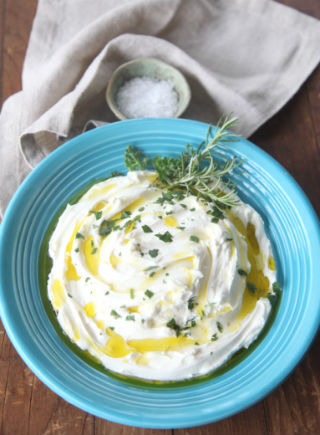 Labneh is a type of Middle Eastern “cheese” made from strained yogurt. Thick and creamy with a mild, tangy flavor, labneh is typically served as a spread or dip. Although labneh can be found in many grocery stores, it’s also really easy to make at home. And if you make it with organic, full-fat cultured yogurt, it’s chock-full of good saturated fat and beneficial probiotics.
Labneh is a type of Middle Eastern “cheese” made from strained yogurt. Thick and creamy with a mild, tangy flavor, labneh is typically served as a spread or dip. Although labneh can be found in many grocery stores, it’s also really easy to make at home. And if you make it with organic, full-fat cultured yogurt, it’s chock-full of good saturated fat and beneficial probiotics.
Even so, you might be thinking, “Dairy? Really?” If that’s the case, then this recipe might not be for you. It’s true that some people don’t tolerate dairy well. But it’s also true that for others, a little bit of dairy can be part of a healthy, well-rounded diet. As noted in this definitive guide, dairy resides in Primal limbo. If you do indulge, then homemade labneh can be a delicious savory treat.
Making labneh is simple: Wrap full-fat yogurt in cheesecloth and let the moisture drain out for 12 to 24 hours, depending on how thick you want it. Then, pour really good extra virgin olive oil on top and if you like, throw in some herbs and/or spices. Mint, basil, parsley, and chives are good; so are za’atar, black pepper and cumin.
Serve labneh with Primal crackers (Primal Cravings has a great recipe for Everything Crackers) or as a dip for raw vegetables. Spoon it over cooked lamb, roasted vegetables, chili and stew, or any spicy dish that needs a cool, creamy topping.
Servings: 1 ½ cups labneh
Time in the Kitchen: 10 minutes, plus 24 hours to strain the yogurt
Ingredients:
32 ounces/3 cups (907 g) organic full-fat plain yogurt
1/2 teaspoon kosher salt (3.7 ml)
¼ cup really good extra virgin olive oil (60 ml)
2 tablespoons finely chopped fresh herbs (30 ml)
Instructions:
Set a strainer over a bowl. Drape a few layers of cheesecloth over the strainer.
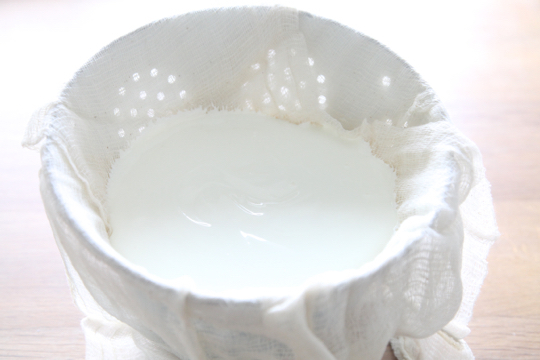
Pour the yogurt into the cheesecloth. Bring the ends of the cheesecloth up around the yogurt into a bundle and tie with a string or rubber band. Keep the bundle in the strainer or hang the bundle over a bowl so the moisture drips out. Refrigerate at least 12 hours and up to 24 hours while the yogurt is strained.
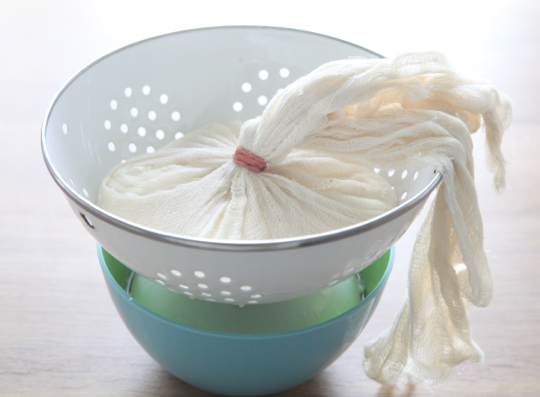
Use a rubber spatula to scrape the thick labneh from the cheesecloth into a bowl. Stir in salt, olive oil and herbs.
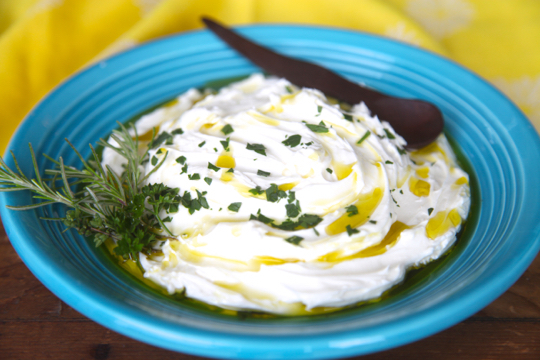
Not Sure What to Eat? Get the Primal Blueprint Meal Plan for Shopping Lists and Recipes Delivered Directly to Your Inbox Each Week



June 26, 2015
Names Withheld to Protect the Embarrassed
It’s Friday, everyone! And that means another Primal Blueprint Real Life Story from a Mark’s Daily Apple reader. If you have your own success story and would like to share it with me and the Mark’s Daily Apple community please contact me here. I’ll continue to publish these each Friday as long as they keep coming in. Thank you for reading!
 This is a story about a little girl who is loved very much.
This is a story about a little girl who is loved very much.
This is also a story about poop.
Years ago, there was a man and a woman who wanted a baby very much. The man had no trouble making babies (he was tested by medical experts). The woman, on the other hand, had endometriosis. She was having trouble getting pregnant.
The man and the woman decided that their end goal was having a baby and that they really didn’t need their biological offspring in order to give love. They decided to forgo expensive fertility treatments and focus on adoption.
In due time, the man and the woman were thrilled to be chosen by a birthmother who wanted them to love her little girl. This birthmother was a generous and loving woman. She graciously invited them to be in the delivery room and witness the birth of their child. Words cannot express the emotions of a woman who could not give birth being able to witness her daughter’s entry into the world! The birthmother even instructed the medical staff to give the baby directly to the woman because she was the baby’s mother. (Thank you birthmother, for everything.)
The man and the woman took their new daughter home from the hospital and began their new life as a family. They had never been so happy to not sleep through the night. Sadly, the baby girl was not breastfed. What’s an adoptive mom to do? She read everything (or so she thought) about raising a healthy baby. She chose a premier formula and prided herself on feeding her baby nothing but the best.
When the daughter was four months old, she started to have explosive diarrhea, or as the man and the woman called it, total diaper blowouts! Of course, they had read about this, and it should have cleared on its own quickly. When it did not, the woman took the daughter to her pediatrician. The doctor told the woman that the daughter had an allergy to milk and she would have to go on a special formula for awhile, then switch to soy formula.
The woman was very sad. She knew that breastfeeding was the epitome of nourishment for her baby. Since she couldn’t provide her daughter with that, she believed the next best thing would be dairy milk-based formula. The woman had an innate distrust of soy products, but this was too early in her health education to put her finger on exactly what she didn’t like about it.
Eventually, the diarrhea cleared and the baby became a toddler. Then the diarrhea resumed. The pediatrician told the woman that it seemed her daughter was constipated. How could this be? She was having diarrhea. The woman was told that sometimes diarrhea will flow around a blockage in the intestines. She was given a list of things, like graham crackers, to feed her daughter. The diarrhea (and presumably the constipation) cleared again. The woman was very happy when she was told that she could switch her daughter from soy milk to Lactaid, and include other diary products with the lactose broken down, like cheese and yogurt.
Then came the acid poops. This is not a medical term, but the man and the woman had no other words to describe it. The daughter would poop in her diaper, and before the man or the woman could get her to the changing table, the poop would start tearing away at the skin on her bottom. Every time the daughter would have a poopy diaper changed she would writhe and cry. The man and the woman were heartbroken to see their daughter so miserable. They convinced their daughter that if she would poop in the potty, it wouldn’t have a chance to touch her bottom and burn her. The daughter learned to poop on the potty very quickly!
Potty training was not finished though. As a matter of fact, the man and the woman could not understand why it seemed like they could never figure out if the little girl was potty trained or not. She wore pull-ups through age four. Some children just have accidents sometimes. At least that’s what the literature said, so the man and the woman did not worry.
As the little girl aged to five, then six years old, the woman became suspicious that bladder accidents should not be common. She took the daughter back to the pediatrician. The woman was advised to put her daughter on a timer. She would tell her daughter when to potty instead of allowing the daughter to self-regulate. This did not fix the problem.
It is important to note that the daughter did not regularly have bladder accidents. Sometimes she had two in a month; sometimes she would go for two months without an accident. At this point the man and the woman would rejoice that their daughter’s problems were over, only to find that another accident was just waiting around the corner.
Finally, the woman decided she didn’t want to talk to the pediatrician about her daughter’s wetting accidents anymore and she decided to visit an urologist instead. The urologist x-rayed her daughter’s abdomen and reported that she was incredibly constipated. In fact, she was so constipated that the pressure from her bowels were blocking off the signals from her bladder.
The woman was stunned. Still constipated? Her daughter was now nine years old! How could she have missed this? In fairness, the woman was no longer attending her daughter in the bathroom so it was not easy to judge just how often bowel movements were actually happening. The daughter’s underwear sometimes had stains of poop in it, so the woman assumed that her daughter was pooping, but not always wiping efficiently. The urologist told her that streaky underwear was often a sign of constipation in children.
The woman was instructed to give her daughter a massive dose of Miralax in Gatorade in order to clear out her system and then keep her daughter on a daily dose of Miralax indefinitely. his did help the problem, but the woman was uneasy with the idea of keeping her daughter on Miralax for so long, even though she was told by the doctor that it was perfectly safe.
By this time her life, the woman had embraced the Primal Blueprint. The woman had had trouble with chronic health issues and was essentially dared by a family member to read The Primal Blueprint and give it a go for a month to see if it helped. Desperate to heal herself, she gave it a try. Lo and behold, it worked!
The woman, having healed herself, despite being offered various chemical cures from her own physicians, began to look at her daughter’s problems in a whole new light. She began n=1 experiments on her daughter and began re-monitoring her daughter’s bowel habits.
The daughter has blossomed into a beautiful girl, now 11 years old. The woman has learned that certain things help her daughter with bowel habits, like a daily avocado, which her daughter enjoys with a small drizzle of maple balsamic. A small nightly dose of magnesium powder in water also keeps things moving. The Miralax has been abandoned. The woman has learned that keeping her daughter away from wheat and sugar is also helpful for bowel regularity, although this is admittedly more difficult as her daughter wants to be seen as a “normal” child in public.
The man, woman and daughter have been joined by a son (also adopted) and a floppy family dog. The entire family is primal and doing very well. The woman can tell when family members fall off the wagon based on moods, headaches or bowels, but over time she has learned not to lecture as much as allow the experiences be their teachers. The woman and daughter do have conversations about healthy food choices, which foods will aid her body and which will likely have a negative impact. Oddly enough, dairy has ceased to be a problem for the daughter. And perhaps best of all, bladder accidents have become a story from the past.
To say happily ever after would be a great way to wrap up this success story, but the story is still so open and ever changing. The woman has become a daily MDA reader and is currently studying the PB Certified Expert course. The family still faces challenges from the outside and inside (sibling rivalry, anyone?).
The best way to wrap up this story is to say this: The man, woman, daughter and son are happy, healthy and grateful to Mark and his team for the research and information they have made available to the general public. They look forward to a beautiful and healthy life together. So maybe happily ever after does fit. Yeah, let’s go with that.




June 25, 2015
7 Ways to Use Stoic Philosophy to Improve Your Health and Happiness
 A few weeks ago, I shared some thoughts on one of my favorite books of late, A Guide to the Good Life: The Ancient Art of Stoic Joy by William B. Irvine. I appreciated the comments from folks who connected with the central message: how to cultivate a life with the most peace and contentment possible. The Stoics were fans of living life mindfully and deliberately. When we’re honest, it’s easy to see how easy (and common) it is to spend life by accident. Getting through the day turns into getting through the years, turns into life gone by. What will we be thinking at that stage? Better, the Stoics advised, to be clear about your intentions, thoughtful in your choices, simple in your desires and content in your days. Here’s how I translate that to Primal practice.
A few weeks ago, I shared some thoughts on one of my favorite books of late, A Guide to the Good Life: The Ancient Art of Stoic Joy by William B. Irvine. I appreciated the comments from folks who connected with the central message: how to cultivate a life with the most peace and contentment possible. The Stoics were fans of living life mindfully and deliberately. When we’re honest, it’s easy to see how easy (and common) it is to spend life by accident. Getting through the day turns into getting through the years, turns into life gone by. What will we be thinking at that stage? Better, the Stoics advised, to be clear about your intentions, thoughtful in your choices, simple in your desires and content in your days. Here’s how I translate that to Primal practice.
First, let me say that this isn’t to abandon the Primal model. I’ve always said that the Primal Blueprint isn’t about recreating primordial conditions. It’s about identifying ancestral patterns, measuring their confluence with modern circumstances and gleaning useful strategies from all available sources to live the healthiest and happiest life possible.
As I mentioned a few weeks ago, the Stoics were all about appreciating simple pleasures, detaching from wealth and status concerns, resisting the expectation of being comfortable all the time, and accepting momentary circumstances for the purpose of equanimity – all principles that I think Grok would’ve recognized. And yet, there’s more than just necessity of circumstance here as it largely was for Grok and his crew. The Stoics present these as voluntary choices to foster gratitude and contentment. The “good life,” they suggest is the simple, present one.
And, according to the Stoics, it’s also the thoughtful, purposeful one. Perhaps more than at any other time in human history we have the opportunity, the privilege really, of discerning our overarching pursuit – our main objective in life. What is it that we really want more than anything else? What would bring us the most peace, the deepest gratification, the most genuine fulfillment? Knowing we had dedicated our lives to a central interest could offer us the most satisfaction and peace at the end of our days. That is our purpose – the interest and organizing principle we must live out and guard as we go through life, Irvine and his Stoic subjects suggest.
I think these principles offer an outline for well-being akin to the Habits of Highly Successful Hunters and Gatherers. How can we navigate life enjoying the most genuine (and sustainable) happiness, the greatest emotional equanimity and the highest gratification? What would these principles look like in Primal practice? Let me offer a few ideas.
1. Articulate your life purpose – and revisit it regularly.
This is the crux of Stoic philosophy – living life on purpose. If we don’t know at the core what we want to cultivate in our lives, one thousand other agendas will freely rush in and take over the entire event. At the end of life we’ll see that we lived other people’s interests and demands instead of ours. It’s an own your days or your days will own you kind of thing….
The simple truth is where we invest our time is where we invest our lives. How much are you aligning yourself with your purpose each day – or are you putting that off while you continually “take care” of other pressing concerns? Without care, those pressing concerns become our lives, and we’ve abandoned our visions, not to mention our self-care.
What do you want your life to be about? Being a compassionate, present parent or caretaker? Being a devoted partner? Being a committed activist or artist or entrepreneur? Being an example of inner and outer health? Being a spiritual seeker? A socially conscious presence on the planet? I’m not here to tell anyone what to seek, and the Stoics didn’t either (despite warning us of the limitations and conflicts involved in making money or fame your primary goal).
Maybe a better way to phrase it is this: what do you want your legacy to be? Legacy is the outcome of the purpose we embody throughout our lives. A pile of money is a collection rather than a creation. Raising a child who is healthy and well-adjusted is a creation. Applying your gifts to a company that serves a legitimate need in the world or championing a cause that enriches a community is a contribution if not a creation. Some people are happy with what they have while other people are happy with who they are. The Stoics asked us to appreciate the difference.
Purpose, like health, can and should be the centerpiece of each day. Integrity of purpose begins today. Like health integrity, it obliges us to get real about our choices and whether or not they’re in alignment with that purpose. Each day the better guidance isn’t asking ourselves what we want but what kind of people we want to be.
2. Develop a gratitude record.
Any kind of gratitude practice will benefit you. I do a kind of gratitude meditation each day, but I have a journal as well. Down the road, having a record means you can look back at not just positive circumstances you’ve enjoyed but the positive attitude you were able to have whether a day was good or bad. You’re reminded that life is a balance of positive events and negative situations. As the Stoics said, we can maintain the most serenity when we attach ourselves to neither but recognize the inevitable pendulum at work.
This raises the issue of what to put in a gratitude journal. Some people complain that it’s just going to end up being the same thing every day – my kids, my job, food on the table. Yes, these are all legitimate things, but I’d suggest looking more closely. How were you fortunate today? What did you do well? What happened in your favor? What did you learn or realize when something unfavorable happened? How did life open to you today – or how did you open to life a little more? What did you see in your child? What did you appreciate in your partner? What kind words did you receive today at work, in the checkout line or during a phone call? What did you get the chance to observe in nature today that inspired you or quieted you?
If we’re having trouble seeing something to be grateful for each day, it’s likely because we’re not seeing much of what we encounter – what we’re being presented with.
The fact is, every one of us receives something good, affirming, even life giving each day. Traditional societies were/are more in touch with this sense of being recipients. Moderns tend to think they make everything happen themselves (until something bad happens, and then they’re looking for who to blame), and this mindset undermines gratitude at the outset. It’s also why those who have gone through hard times are often more grateful. They’ve come up against events and losses during which others help and support buoyed them. Small things felt magnified. When you live day to day in the present moment because you choose to or because you have to, you aren’t as likely to miss (or dismiss) the positive details.
I personally think a gratitude journal is one of those endeavors that pays off more the longer you do it. Don’t worry in the beginning if it feels forced or trite. It’s for no one but you. Act as if until you catch on, until it becomes a habit. You’d be surprised how deeply this one can change your outlook on life and how that shift can instigate deep changes.
3. Live with boundaries.
Boundaries aren’t walls or self-enclosures. The idea here isn’t to isolate ourselves or refuse to live in community or collaboration. It’s about acknowledging that we’re working with limited resources here – limited time and energy. To pretend otherwise is delusion.
Think of living with boundaries as managing your investments – your time and energy investments. If you give all your time and energy away to ancillary purposes or unhelpful emotions (e.g. anger, resentment, worry), you’ll have nothing left for the central vision and people in your life. Maybe Grok didn’t worry about a central vision, but he also didn’t field the eight zillion inputs, tasks and notifications that we do in a day. If it’s a contest of who is more at risk of mis-living a life, I’m going to vote for the modern every time.
Consider which relationships and endeavors sustain your equanimity, foster your well-being, serve your overarching vision in life. Invest in these. Let the rest go, or mindfully give budgeted amounts to other interests and circles as you reasonably can. There’s nothing wrong with selectivity. No person can or should be responsible for everything and everyone in the universe. To be a useful presence in the world, we need to be balanced people. We can’t become or sustain that by being at the whim of others’ demands, judgments or suggestion.
4. Imagine not getting what you want (i.e. create a detachment practice).
I’d call this the flip side of a gratitude record, but it cultivates gratitude in its own way.
The idea here is to let go of attachment in life – attachments to outcomes we desire, attachments to conditions we feel we are essential, attachments to possessions and even relationships we feel we couldn’t live without.
On the one hand, there are the small things – the desires we have, the outcomes we chase. It’s important to be able to understand that life can be great even when we don’t get our wish lists. Someone sent me a funny gif the other day that said something to the effect of “As long as everything is exactly the way I want it, I’m 100% flexible.” Of course, this was meant to be funny, but the truth is some people really live this way – or mis-live, as the Stoics would label it. Life will present us with enough challenges. We don’t need to set ourselves up for more by fueling expectations or living rigidly. Sometimes not getting what we want is the best thing possible.
Sure, when it comes to the deeper things (our close relationships, etc.), it can be harder. As much as we’d like to think otherwise, nothing is permanent. No one is guaranteed anything in this life except the eventual end. Rather than getting depressed about it, we can embrace it and see it as reason to hold our connections and possessions lightly – to care about and enjoy them without identifying all of life or happiness with them.
5. Develop a resilience discipline.
I don’t think I’m being too controversial when I say we’ve gone soft. Yup, with our climate control and advanced weather wear, our motorized transit, tap water and shopping – even delivery – conveniences. For many people, it’s entirely doable if not easy to live without walking, lifting, shivering, sweating or otherwise being in touch with the “hard” parts of having a physical body.
Grok and his clan lived with variability in a way we’re cut off from. Reapplying that into our lives with imposed power outages, cold water therapy, and other physical measures can help our bodies and minds recalibrate to a more flexible, resilient center.
Likewise, getting out of our comfort zones and doing something that exposes us to the aspects of life and community we’d like to pretend don’t exist (ideally with the point of interacting and helping rather than simply observing) can get us in touch with a reality larger than our own and build mental fortitude as well as emotional resilience.
6. Apply a control grid.
Irvine expanded his description of the Stoic’s suggested categories for what we have control over and what we have no control over by splitting what we have complete control over and what we have partial control over (along with the third category we don’t have a hand in).
In the moment of “figuring out” or otherwise stressing over a problem, it’s so easy to think every facet of an issue is something you can influence. An insanity-producing, white-knuckle fantasy kicks in that says you better make this happen or get a handle on it – now.
How about unclenching the jaw and letting the tightened fist go slack and getting, yes, a real grip?
Breathe for a minute and get out your graph paper. At the top – issue du jour. Across the page – what I have total control over, what I have some control over and what I have absolutely zero control over. Instant perspective if you’re honest.
I know, people will nod their heads and give it mental lip service for a minute, thinking that it’s a good idea. No, it’s not a good idea. It’s useless as an idea. Make it a practice – a regular, unflinching practice for all your family, work, financial and other problems.
The benefit of actually doing it? You’ll be more efficient in applying your logistical efforts and emotional investment. A good leader (of a corporation or a life) applies him/herself thoughtfully and efficiently. Stop spinning your wheels.
7. Accept your life as “on loan.”
Finally, apply what I’d call the ultimate overlay. You can write about this or just think about it as a periodic practice. Step back on a regular basis and really let it all sink in that everything in your life – including your beating heart itself is all on loan. That means all of it – kids, partner, friends, parents, possessions, work, land, talents, joy, grief, awe. Your life itself is borrowed from Life as a capital L force. We get to play for a little while, and then it’s gone.
Some will choose to attach metaphysical meaning to this concept. I think it stands quite well without it, but it makes no difference. The point is the same. You drink in the fact that Life existed before you and will exist after you. All and everyone you love – same deal.
Some people may file it under religion. Others may connect it to the ongoing nature of life – or even the laws of evolution. Grok and his crew were subject to forces larger than themselves, and they recognized this. For me, it’s not a question of spirituality. It’s a question of humility and proportion.
And that, I believe, is the heart of the Stoic perspective itself – an approach that puts us at the center of our own lives – not to manhandle life or to detach entirely, but to live more lightly and deliberately. When we mind our time and thoughts well, we can better enjoy the unfolding story.
Thanks for reading today. I’d love to hear your thoughts on living a good life – whether you connect it with Stoic principles or not. Have a great end to your week, everyone.




June 24, 2015
9 Primal/Paleo Podcasts You Should Be Listening To
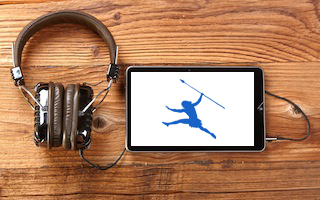 Podcasts have become a lifesaver for me. Whenever I’m stuck in traffic (which is whenever I drive in LA), or have a long trip ahead of me (and I don’t feel like or can’t read), I use podcasts to make otherwise wasted time incredibly productive, engaging, and enjoyable. Here are what I consider to be the best Primal/paleo/ancestral health-related podcasts in the world. I’ll also throw in some of my favorite podcasts that have nothing at all to do with health and fitness and Primal living.
Podcasts have become a lifesaver for me. Whenever I’m stuck in traffic (which is whenever I drive in LA), or have a long trip ahead of me (and I don’t feel like or can’t read), I use podcasts to make otherwise wasted time incredibly productive, engaging, and enjoyable. Here are what I consider to be the best Primal/paleo/ancestral health-related podcasts in the world. I’ll also throw in some of my favorite podcasts that have nothing at all to do with health and fitness and Primal living.
Let’s get right to it:
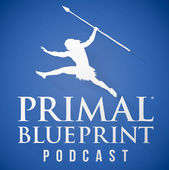 Sure, I’m biased, but for good reason: we get some great guests and feature some excellent hosts. I’ve had a lot of fun with the podcast. It’s something I’ve always wanted to get into but never felt it was the right time to jump in. Turns out you just have to go for it and make sure you have plenty of great support. Which I do: hosts Brad Kearns, Elle Russ, and Brock Armstrong have done the lion’s share of the work on the podcast, allowing me to hop in when I can. It also doesn’t hurt that we have some a wealth of content to share, whether it’s answering reader questions or talking to ancestral health superstars.
Sure, I’m biased, but for good reason: we get some great guests and feature some excellent hosts. I’ve had a lot of fun with the podcast. It’s something I’ve always wanted to get into but never felt it was the right time to jump in. Turns out you just have to go for it and make sure you have plenty of great support. Which I do: hosts Brad Kearns, Elle Russ, and Brock Armstrong have done the lion’s share of the work on the podcast, allowing me to hop in when I can. It also doesn’t hurt that we have some a wealth of content to share, whether it’s answering reader questions or talking to ancestral health superstars.
Highlights: Laird Hamilton, Kelly Starrett, David Perlmutter.
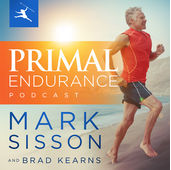 We’ve just launched the Primal Endurance Podcast, but it’s getting good buzz despite its youth. I’m known as the “anti-cardio” guy, which is a misnomer and misrepresents my actual position. Really, I’m anti-chronic cardio, the kind of day in, day out, sugar-fueled and oxidative stress-accumulating high-intensity endurance overtraining that so many people think they have to do to be healthy and fit. Since I’ve been in the game for decades, and I’ve seen it from the inside, I know why it happens and what we can do to fix it. I know people want to train for endurance sports. This podcast is about showing you how to go about that in a safe, effective, and health-promoting manner.
We’ve just launched the Primal Endurance Podcast, but it’s getting good buzz despite its youth. I’m known as the “anti-cardio” guy, which is a misnomer and misrepresents my actual position. Really, I’m anti-chronic cardio, the kind of day in, day out, sugar-fueled and oxidative stress-accumulating high-intensity endurance overtraining that so many people think they have to do to be healthy and fit. Since I’ve been in the game for decades, and I’ve seen it from the inside, I know why it happens and what we can do to fix it. I know people want to train for endurance sports. This podcast is about showing you how to go about that in a safe, effective, and health-promoting manner.
Highlights: Tim Noakes, Phil Maffetone (Parts 1,2).
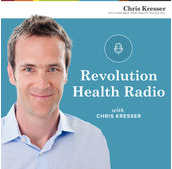 Chris Kresser, together with Steven Wright of SCDLifestyle fame, typically uses his podcast platform to delve deeply into one or two health-related topics. Each episode is a special report on things as disparate as methylation, diabetes prevention, coffee, juicing, and what lipoprotein A means for your health. Chris gets his hands dirty sifting through the murky world of alternative (and not so alternative) health, nutrition, and fitness. As a clinician and researcher, he brings a unique blend of real-world experience and book learning to the table. And with every episode, you’ll learn what Chris ate for breakfast that day, which always seems to involve sauerkraut.
Chris Kresser, together with Steven Wright of SCDLifestyle fame, typically uses his podcast platform to delve deeply into one or two health-related topics. Each episode is a special report on things as disparate as methylation, diabetes prevention, coffee, juicing, and what lipoprotein A means for your health. Chris gets his hands dirty sifting through the murky world of alternative (and not so alternative) health, nutrition, and fitness. As a clinician and researcher, he brings a unique blend of real-world experience and book learning to the table. And with every episode, you’ll learn what Chris ate for breakfast that day, which always seems to involve sauerkraut.
Highlights: Chris Masterjohn, Paleo Nerd-a-Thon with Mat Lalonde and Robb Wolf
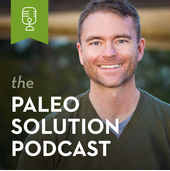 Robb Wolf — what a guy, right? Nobody does it quite like Robb, who manages to blend crass humor, razor sharp insight, blunt but effective advice, and irreverence into perhaps the most popular (for good reason) podcast in this arena. Some episodes are Q&A from the readers. Others are formal interviews with notable health experts. And some are just roundtable discussions akin to a night out with your pals, if your pals happened to be ancestral health experts. If you’re at all interested in the world of paleo nutrition, you need to listen to this podcast. Heck, you probably already are listening to it.
Robb Wolf — what a guy, right? Nobody does it quite like Robb, who manages to blend crass humor, razor sharp insight, blunt but effective advice, and irreverence into perhaps the most popular (for good reason) podcast in this arena. Some episodes are Q&A from the readers. Others are formal interviews with notable health experts. And some are just roundtable discussions akin to a night out with your pals, if your pals happened to be ancestral health experts. If you’re at all interested in the world of paleo nutrition, you need to listen to this podcast. Heck, you probably already are listening to it.
Highlights: Kurt Harris, Kirk Parsley, yours truly.
 Diane Sanfilippo and Liz Wolfe are a dynamic reader question-answering duo. Diane wrote the bestselling Practical Paleo, while Liz is the author of the recently released Eat the Yolks. Their show is hilariously conversational, with lots of tangents (in a good way) that spin off and somehow circle back around to stay relevant to the discussion at hand. This is a paleo podcast that non-paleo adherents can enjoy because it goes off the rails so often (again, in a good way). But don’t mistake it: this is a legit source of fantastic exercise, dietary, health, and wellness information. If you’ve got a question about all this Primal stuff, check out their archives because they’ve probably addressed it.
Diane Sanfilippo and Liz Wolfe are a dynamic reader question-answering duo. Diane wrote the bestselling Practical Paleo, while Liz is the author of the recently released Eat the Yolks. Their show is hilariously conversational, with lots of tangents (in a good way) that spin off and somehow circle back around to stay relevant to the discussion at hand. This is a paleo podcast that non-paleo adherents can enjoy because it goes off the rails so often (again, in a good way). But don’t mistake it: this is a legit source of fantastic exercise, dietary, health, and wellness information. If you’ve got a question about all this Primal stuff, check out their archives because they’ve probably addressed it.
Highlights: Chris Kresser, burning fat vs. burning carbs.
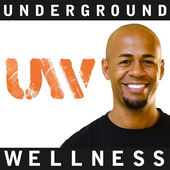 If you were to look up the word “infectious” in the dictionary, a picture of host Sean Croxton would appear. Because of his enthusiasm. The guy just sucks you in. And I’ve met him. I’ve appeared on his show. It is not an act. It is full-on unbridled, ultra-sincere enthusiasm for health, wellness, fitness, and nutrition. When you subscribe to Underground Wellness and listen to it regularly, you’ll get exposed to a diverse sampling of “alternative” health practitioners, experts, coaches, authors, trainers. Sean crosses all borders and respects no boundaries, making his show good for hearing from people with whom you might disagree (but can learn a thing or two from).
If you were to look up the word “infectious” in the dictionary, a picture of host Sean Croxton would appear. Because of his enthusiasm. The guy just sucks you in. And I’ve met him. I’ve appeared on his show. It is not an act. It is full-on unbridled, ultra-sincere enthusiasm for health, wellness, fitness, and nutrition. When you subscribe to Underground Wellness and listen to it regularly, you’ll get exposed to a diverse sampling of “alternative” health practitioners, experts, coaches, authors, trainers. Sean crosses all borders and respects no boundaries, making his show good for hearing from people with whom you might disagree (but can learn a thing or two from).
Highlights: Gretchen Rubin, Terry Wahls, Katy Bowman.
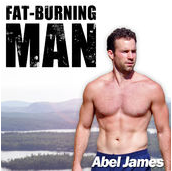 Host Abel James is a singer-songwriter, Primal nutrition expert, entrepreneur, best-selling author, cooking app developer, and all around awesome dude. He pretty much does it all, and does it well, which is why he’s been a PrimalCon presenter and Primal Blueprint Podcast special guest in times past. That also makes the Fat-Burning Man Show a real treat to listen to. Abel’s able (yep, that was on purpose) to bridge the gap between so many different worlds and expose the listener to perspectives he or she may not have considered. So while the stated focus of the podcast is evolutionary health and fitness, it covers way more than that.
Host Abel James is a singer-songwriter, Primal nutrition expert, entrepreneur, best-selling author, cooking app developer, and all around awesome dude. He pretty much does it all, and does it well, which is why he’s been a PrimalCon presenter and Primal Blueprint Podcast special guest in times past. That also makes the Fat-Burning Man Show a real treat to listen to. Abel’s able (yep, that was on purpose) to bridge the gap between so many different worlds and expose the listener to perspectives he or she may not have considered. So while the stated focus of the podcast is evolutionary health and fitness, it covers way more than that.
Highlights: John Kiefer, Tim Ferriss, Nina Teicholz.
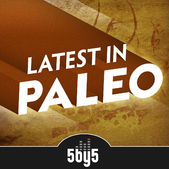 Angelo Coppola grows and changes and molts with the times, morphing from orthodox paleo when he started to plant-centric paleo today. Although these seemingly shocking transformations may turn off some, they’re just evidence of personal evolution and, in my view, personal integrity. At the very least, it’s an interesting course to follow along with as a listener. You may not agree with the way he approaches ancestral health, but you’ll probably be forced to question your assumptions — which is always a good thing. And you’ll hear and learn from health figures you might otherwise not be exposed to, like a vegan cardiologist. The bulk of Latest in Paleo focuses on relevant news, scientific papers, and other paleo-related material from around the world, which anyone can enjoy.
Angelo Coppola grows and changes and molts with the times, morphing from orthodox paleo when he started to plant-centric paleo today. Although these seemingly shocking transformations may turn off some, they’re just evidence of personal evolution and, in my view, personal integrity. At the very least, it’s an interesting course to follow along with as a listener. You may not agree with the way he approaches ancestral health, but you’ll probably be forced to question your assumptions — which is always a good thing. And you’ll hear and learn from health figures you might otherwise not be exposed to, like a vegan cardiologist. The bulk of Latest in Paleo focuses on relevant news, scientific papers, and other paleo-related material from around the world, which anyone can enjoy.
Highlights: Stephan Guyenet.
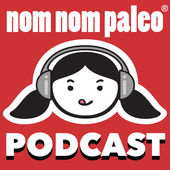 You may know Michelle Tam from her incredibly popular and delicious recipe blog (yes, the blog itself is delicious), app, and book, but she’s just embarked on a podcasting career that appears to be going very well. Each week, she, her husband, and their two kids gather around the dinner table to record a podcast. It’s about as precious and endearing as you’d imagine from that description. You’ll hear the clan tell how they spend their days, discuss what they eat, interview famous chefs, and even have special surprise guests from the paleo health community. It’s a fun show with a lot of promise.
You may know Michelle Tam from her incredibly popular and delicious recipe blog (yes, the blog itself is delicious), app, and book, but she’s just embarked on a podcasting career that appears to be going very well. Each week, she, her husband, and their two kids gather around the dinner table to record a podcast. It’s about as precious and endearing as you’d imagine from that description. You’ll hear the clan tell how they spend their days, discuss what they eat, interview famous chefs, and even have special surprise guests from the paleo health community. It’s a fun show with a lot of promise.
Highlights: Desperation Dinners, The Perfect Steak, Top Chef’s Gregory Gourdet.
What else is good?
I’ve got a few other favorites that you might find interesting. Be warned, though: they have little/nothing to do with health, wellness, nutrition, fitness, or Primal living.
Hardcore History — Host Dan Carlin makes an already fascinating subject — history — come alive and become even more engrossing. Each episode runs as long as 4 hours and draws on hundreds of primary and secondary sources. Highlights include the Wrath of the Khan series and the Death Throes of the Roman Republic series (which is now under a paywall, but still worth it).
Tangentially Speaking — Chris Ryan, author of Sex at Dawn, talks to interesting people about interesting subjects. Coursing through the episodes is Ryan’s basic view that life was simply better in prehistoric hunter-gatherer societies, a feeling to which many of you may relate. Highlights include the episodes with Murphy Pelot, Thaddeus Russell, Peter Gray, and Dennis McKenna.
Radiolab — Some people don’t like the production, but I really dig it. And the subjects they cover are worth it even if you’re one of the ones who don’t. Highlights include Patient Zero, Emergence.
This American Life — The best storytelling podcast around. Hard to go wrong here.
Serial — Everyone was talking about it, for good reason. Serial followed a real life crime story as the host investigated the guilt or innocence of a convicted murder. Listen to them all.
Star Talk Radio with Neil Degrasse Tyson — Great science stuff. Plus, Bill Nye the Science Guy is a frequent guest. Highlights include episodes with Dan Savage, Christopher Nolan (the science of Interstellar), and Temple Grandin.
Happier with Gretchen Rubin — Gretchen Rubin gives concrete tips on how to be happier, which is pretty much what we’re all after. Highlights include Stop Reading That Book and Be a Tourist in Your Own City.
Love+Radio — Really fascinating stories. Some incredibly disturbing ones, too. Often not safe for children. Highlights include The Living Room, The Wisdom of Jay Thunderbolt, Split Brain, Paremoremo.
That’s about it for me, folks. Now let’s hear from you.
What’s your favorite Primal podcast? What’s your favorite non-Primal podcast? What did I leave out? Let’s hear all about them down below!
Thanks for reading.




June 23, 2015
The Pitfalls and Limitations of Self-Experimentation
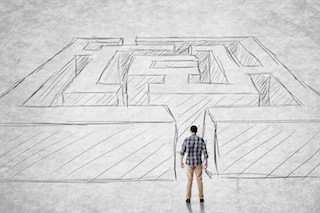 I’m a huge proponent of self-experimentation. We can’t always rely on funding for research relevant to our needs, interests, and desires, and those studies that are relevant are still using participants that are not us. We like control, when it comes down to it. We want to be the arbiters of our own destinies, and running (formal or informal) self-experiments of 1 can help us get to that point. But as helpful as it can be, there are both inherent limits to self-experimentation and common pitfalls people fail to take into account when designing their experiments of one.
I’m a huge proponent of self-experimentation. We can’t always rely on funding for research relevant to our needs, interests, and desires, and those studies that are relevant are still using participants that are not us. We like control, when it comes down to it. We want to be the arbiters of our own destinies, and running (formal or informal) self-experiments of 1 can help us get to that point. But as helpful as it can be, there are both inherent limits to self-experimentation and common pitfalls people fail to take into account when designing their experiments of one.
I’m not referring to the basics of experimentation, like the need to control for variables or the importance of limiting the number of interventions you test at once. You guys know that stuff. I’m talking about the limitations most people don’t foresee:
No baseline measurements.
The best studies establish a baseline against which any experimental effects are plotted; these are baked into the design. If you have no baseline, you can’t compare your “findings” to anything. In fact, you don’t even have any solid findings without a baseline. You just have feelings, or hunches, which are fine, but they don’t tell the complete story or establish causation. Since many self-experimenters tend to be less formal than clinical researchers, more “fly by the seat of their pants,” failing to establish a baseline is a common weakness.
Lack of placebo.
When applicable, a placebo — an inactive control against which the active experimental intervention is compared — strengthens an experiment’s impact. If a person takes the placebo (often a sugar pill) and it works just as well as the active intervention, researchers know the latter probably isn’t all that active after all.
Inserting a placebo into our self-experiments isn’t always viable or possible, of course (how would you placebo control an experiment testing the effect of cold water plunges?), and it adds a level of complexity to what we often expect to be a simple case of “let’s try this out.” Also, some people simply scoff at the notion that they’d be susceptible to placebo. (“Sure, those anonymous people in the other study might be “weak enough” to fall for it, but not me!”) Which is why it’s easy to forget (willfully or otherwise) to use a placebo.
Lack of blinding.
The best experiments are blinded, which prevents the participants from knowing whether they’re receiving the active intervention or the placebo. This is important because the simple knowledge of what you’re taking can change your response to the intervention, especially when it’s something you “want” to work — which is exactly what most self-experimenters are testing. Blinding allows researchers to measure effects independent of the subject’s expectations, desires, or biases.
Lack of double-blinding.
In a double-blinded study, neither the participants nor the doctors know who’s receiving the placebo and who’s receiving the treatment. This is important because if clinicians know they’re giving subjects a placebo, their interactions with subjects will change in subtle, subconscious ways, and this can affect the effect of the treatment. Ideally, double-blinding also blinds the data collectors, outcome adjudicators, and data analysts involved in the study to remove any trace of bias or expectation.
Lack of applicability to other people.
Most people who smoke cigarettes never get lung cancer. We all have an anecdote of a grandparent who smoked multiple packs a day and lived to the ripe old age of 90+ without ever developing a serious smoking-related disease. And if that cancer-resistant grandpa conducted a self-experiment to test the effects of smoking on cancer risk, he’d conclude that it was completely safe for him. And it would be — for him, in that instance — but because of research involving tens of thousands of subjects, we have a strong idea that smokers have a 15x greater chance of contracting lung cancer than non-smokers. The advantage of funded research and experiments of 20, 50, or a 1000 people is that the results are more applicable to more people.
This limitation isn’t a problem if you acknowledge that your self-experiment is about you and you alone and withhold application to the rest of humanity, but it is a limitation.
Regression to the mean.
Eventually, we recover from illness on our own. Left to its own devices, the body will heal. And while it’s attractive to ascribe credit to the vitamin C we took for stopping our flu in its tracks, the same thing could have happened had we taken nothing at all. This is even more likely when we realize that people generally turn to self-experimentation when symptoms are worst, where there’s nowhere to go but back to the baseline.
Using short-term effects to extrapolate long-term ones.
You might feel great in your month-long experiment foregoing sleep at night for micronaps throughout the day, but does that mean it’s safe? It might be. Maybe it is an effective replacement for traditional sleep patterns. But one month is not enough time to tell us that.
This is a problem with most studies, of course. But self-experiments aren’t exempt, and since we tend to trust ourselves and our experiences over the results from a PubMed abstract, self-experimenters are particularly prone to unwarranted extrapolation.
Most of these aren’t unique to self-experimentation; if it is to be powerful and valid, any type of trial must account for biases, blinding, placebo, and improper extrapolation. Most can be avoided, mitigated, or overcome with careful planning and rigorous design. But self-experimenters are all too susceptible to forgetting about or ignoring these limitations and skipping the rigorous design to get to the good stuff. Because, well, it’s kind of hard. (So I wrote a book to make it easier.) That’s the rub, though. We can cruise PubMed and read hundreds and thousands of studies whose authors accounted for everything for us. They did the work. But when we run a self-experiment, we must do the work because we are subject, researcher, analyst, and clinician.
We’re not just the participants in self-experiments; we’re also the authors. We handle everything. We can’t relinquish control to an external authority. Self-experimenters can certainly use placebo controls and blind themselves, but it requires a level of dedication and rigor that, for some people, is just unrealistic or beyond their means. Also, we often run self-experiments just to “try things out” or “see how it works,” and if it works, we’re happy. That our guess might work because of the placebo effect doesn’t bother most people who only want to make themselves healthier. That’s fair, but it also means our results can’t establish causality.
I don’t expect everyone to establish definitive cause and effect for every decision they make, bite of food they take, and lifestyle modification they enact. That’s just ridiculous. We’re not trying to pass peer review here. We’re trying to live better. And not every “study” needs to be rigorous. But by heeding some of these common self-experimentation pitfalls — not even necessarily all of them — or at least being aware of them, we can increase the power of our forays into personal science.
Are you a self-experimenter? If so, have you noticed yourself falling prey to any of the pitfalls mentioned in today’s post? Are there any that I’ve missed? How have you handled it in the past, and how will you do it in the future?
Thanks for reading, everyone. Take care!




June 22, 2015
Dear Mark: Melatonin Supplementation, Overcoming Previous Poor Health, and Is HIIT Too Stressful for Women?
 For today’s edition of Dear Mark, I’m answering three questions from readers. First up, what’s the deal, exactly, with melatonin supplementation? Is it harmful? Dangerous? Will it impair our body’s own production of melatonin? Second, a reader wonders whether his past poor health decisions are sabotaging his health today. Even if he’s feeling great now, shouldn’t he worry about the permanent effects from all that pizza he ate and sleep he didn’t get back in the day? And finally, some people recommend against sprinting or high intensity interval training for women. Is it true? Should women only go gently into the gym to tread lightly on ellipticals and avoid all that sweaty, icky fast stuff?
For today’s edition of Dear Mark, I’m answering three questions from readers. First up, what’s the deal, exactly, with melatonin supplementation? Is it harmful? Dangerous? Will it impair our body’s own production of melatonin? Second, a reader wonders whether his past poor health decisions are sabotaging his health today. Even if he’s feeling great now, shouldn’t he worry about the permanent effects from all that pizza he ate and sleep he didn’t get back in the day? And finally, some people recommend against sprinting or high intensity interval training for women. Is it true? Should women only go gently into the gym to tread lightly on ellipticals and avoid all that sweaty, icky fast stuff?
Let’s find out:
What’s up with melatonin? I’m 50 and have had issues sleeping for several years now–might be related to peri-menopause. Just read in Trust Your Gut that taking melatonin can help with digestive issues such as bloating or cramping. I’m thinking of adding this supplement to my ritual–I already dim the lights and prepare well ahead of time (1-2 hours) for sleep yet wake every night. Any dangers I should be aware of?
Thanks!
Kris
Melatonin is actually quite safe.
There’s no evidence that melatonin supplementation will down-regulate normal endogenous production of the hormone. It’s a commonly-held concern with melatonin, but it’s just not the case whether you’re supplementing with 0.5 mg, 2 mg, or 5 mg.
When you take melatonin matters; do not take it in the morning or afternoon. It is a hormone designed by evolution to hasten the arrival of sleep. Supplementation of melatonin, then, is meant to closely mimic the natural elevation of melatonin. It peaks at night, so take it at night.
The real power of melatonin lies in its ability to adjust your circadian rhythm. That’s why it’s integral to my anti-jetlag routine, and why researchers have found to it be far more effective than placebo in dealing with jetlag. Taking it before your desired bedtime in the new timezone will help establish that time as your body’s bedtime. But it also means you can use melatonin to misalign your circadian rhythm if you take it too early, like in the morning. This can have disastrous effects.
Like when postmenopausal women took 1 mg of melatonin every morning at 8 o’clock sharp. This harebrained way to take a sleep hormone drastically impaired their glucose tolerance and insulin sensitivity, partially because of circadian phase shifts.
Don’t eat after taking melatonin and make sure you take it at least an hour (ideally more) after eating dinner. Acute doses of melatonin seem to inhibit insulin sensitivity, regardless of when you take it. This initially sounds “bad” but makes sense, since you generally shouldn’t be eating massive amounts of food at bedtime.
You probably don’t need high doses. Some studies indicate that lower doses (around 0.5 mg) are just as effective as higher doses (5 mg), and possibly more effective. Higher doses are fine, mind you. They just may be unnecessary, and the lower doses are better at mimicking the normal physiological levels.
And because we’re talking about it, here are some other, lesser known uses for melatonin:
To mitigate the effects of light at night. You do your best to avoid artificial light at night. You wear the blue blocking goggles. You burn free range grass-fed tallow lamps. You’ve covered your 50 inch LED TV in blue-blocking saran wrap from the folks at LowBlueLights.com. Yet there are those times that artificial light slips through our best-laid defenses to enter our vulnerable pupils, thus inhibiting melatonin production and phase delaying our circadian rhythm. When that inevitably happens, or will happen in the near future, taking melatonin (5 mg in this study) can partially offset the circadian phase shift.
After a night of drinking, take some melatonin. It can protect the gut against alcohol’s degenerative effects on the epithelial barrier. And if alcohol makes you wake up to urinate in the night (or if you just wake up to urinate too often in general), melatonin may help as low levels of the hormone are associated with nocturia (or nighttime urination).
Melatonin is a pretty benign supplemental hormone, provided you actually need it and take it at the right time (1-2 hours before desired bedtime) and only take as much as you need to get the desired effect (sleepiness).
Dear Mark,
I have been on a “health kick” for the last year and I feel incredible. However, I’m curious about whether my past habits of a poor diet, no exercise and high stress will effect my current and future health, despite improving my habits recently. I’m only 20 years old if that helps.
Thanks,
Luke
Our cells are regenerative. The past can’t be rewritten, but it can be overcome and rendered essentially obsolete.
Even still, what would you do if that weren’t the case? Would you lament the fact that you ate pizza and drank PBR for two years straight in college? Are you going to let your high school late night online gaming and Mountain Dew habit derail your efforts at getting healthy?
If you do that, if you let any poor health decisions made in the past linger in and cloud your mind, you will destroy yourself. This is spilt milk on a cosmic scale.
So your belly fat is a little more stubborn than you’d like. So a sugar monster lurks beneath your resolve, and probably always will.
Who cares?
There is no sense in obsessing over what you cannot change. If you’re going to pore over your past, do so constructively and with a clear objective: to learn from your mistakes and revisit them to identify what you shouldn’t do.
Look: if your mother carried you to term as war raged in the streets around her, food was scarce, liquor plentiful, and stress high, maybe there would be long lasting repercussions due to maladaptive epigenetic triggers to gene expression. You are what your mother, father, and grandparents ate (and experienced), after all. Those are tough.
But even in that “worst case” in utero scenario, what can a person do but continue to make the best choices they can today, here, now?
You’re not helpless, is my point. There are things to do.
Promote autophagy, for one. Autophagy is cellular clean-up, the breakdown, metabolism, and recycling of broken cellular components. Autophagy is anti-aging; it keeps cells running like new (healthy centenarians tend to experience higher baseline autophagy than shorter-lived populations, for example). Because an unhealthy lifestyle may have sped up the aging process, autophagy becomes more important than ever to slow further degeneration.
How?
Get lots of sleep and only stay up late when it’s worth it, like if you have good friends over for dinner that lasts late into the night, or it’s the only time you can watch a really great movie with your loved one curled up on a couch. Don’t stay up late watching reruns of bad TV. Make your sleep deprivation count for something, and keep it acute and intermittent.
Speaking of intermittent, fast every once in awhile. You don’t have to do it on a schedule, or even every week or two. It doesn’t have to be an entire day-long affair. But intermittent fasting has the potential to increase autophagy.
In all likelihood, you’re probably already doing much of it. You’re sleeping better. You’re not eating as much food as you used to eat, and you may even be skipping meals from time to time. How do I know this? You said it yourself: you feel incredible. That’s the most important health marker of all.
Again, don’t worry about your past. Don’t forget your past – because it’s a roadmap of what not to do — but don’t dwell in it.
Hi, Mark,
Thanks for all the good information you put out there! It is much appreciated.
I do not expect a reply. I was just hoping you would consider covering the topic of HIIT-style workouts and female hormonal balance. People like Alisa Vitti advise women to stay away from HIIT because, in her understanding and knowledge, they disrupt hormonal balance, which, as you know, is much more delicate in women than it is in men. Anyway, just wondering if you could give us your two cents on this at some point.
Thanks again!
Marusha
I’m not too familiar with Alisa Vitti’s material, but what I could find suggests that hers is not a blanket condemnation of interval training, sprints, or intense exercise in general. In Womancode, she identifies sprinting as a “stressor” for the adrenals that can sap at a woman’s already-lagging libido. If you’re trying to recovery your libido, she recommends favoring long leisurely walks over sprints. I don’t disagree, in general. If a person is dealing with undue amounts of stress, adding high-intensity interval training may represent too great a stress additive, rendering it less effective if not altogether counterproductive.
But when you look at the sprinting/HIIT literature, it becomes pretty clear: women can benefit from running (or cycling, rowing, Versaclimbing) really fast every once in awhile just as much as men:
Improves fat-burning capacity.
Improves aerobic fitness to a greater extent than regular cardio (in overweight women).
Sprinting (running) induces fat loss (in healthy young women).
Improves body composition whether performed fed or fasted (in overweight/obese women).
Improves glycemic control and insulin sensitivity (in overweight women), even when combined with another stressor (resistance training).
You can definitely do too much sprinting or HIIT. But in most situations, sprinting once, maybe twice a week can only be beneficial.
That’s it for today, folks. Thanks for reading and be sure to leave any input or advice for today’s round of questioners down below!




June 21, 2015
Weekend Link Love – Edition 353
 Get a free jar of organic coconut oil from Thrive Market (expires June 24).
Get a free jar of organic coconut oil from Thrive Market (expires June 24).
Research of the Week
High levels of circulating coffee metabolites are associated with a lower colorectal cancer risk.
People with non-celiac gluten sensitivity are more likely to have an autoimmune disease.
Among people with hereditary neuroticism, consumption of fermented foods may reduce social anxiety.
New Primal Blueprint Podcasts

Episode 72: : Mark Sisson, Brad Kearns, and Elle Russ: I get together for a roundtable chat about just about everything that comes t0 mind — my talk with Laird Hamilton, what motivates Brad and me to train, the difference between a fun race and a positive race, what I learned at Paleo f(x) (and how my talk was received), whether Primal/paleo is finally leveling off, and much, much more.
Each week, select Mark’s Daily Apple blog posts are prepared as Primal Blueprint Podcasts. Need to catch up on reading, but don’t have the time? Prefer to listen to articles while on the go? Check out the new blog post podcasts below, and subscribe to the Primal Blueprint Podcast here so you never miss an episode.
The Greatest Piece of Exercise Equipment Ever Invented
The Definitive Guide to Napping
Also, be sure to check out and subscribe to the (relatively) brand new Primal Endurance Podcast.
Weekly sweepstakes: Submit a review for The Primal Blueprint Podcast or The Primal Endurance Podcast on iTunes and submit this form for a chance to win a Primal prize package. One new winner is chosen every week!
Interesting Blog Posts
The benefits of near-infrared light.
Some thoughts (and links) on low back pain.
Media, Schmedia
The FDA has banned trans fats. Here are five facts about the decision.
I vote for “killer frisbee.”
Everything Else
Just cause you’re a night owl doesn’t mean you should be eating late. Refraining from late night food might save your brain.
Want to support standing workstations for school kids? Give Tim Ferriss a birthday present.
The use of native hallucinogens to improve the senses and performance of hunting dogs in lowland Ecuador and Peru: rather than chasing balls, these dogs are tripping them.
Find a farmers’ market near you. Or is it farmers market? I’ve never been able to decide.
A UK dermatologist is saying regular sun exposure is good, not bad, for us.
Recipe Corner
Go make this salted watermelon ice right now.
Salad, for breakfast? Yep.
Time Capsule
One year ago (Jun 23 – Jun 29)
16 Things That Affect Your Gut Bacteria – Almost everything that can and will change the composition, function, and health of your gut biome.
Believe It or Not, the Human Body is Remarkably Resilient – You can always improve. It’s never too late.
Comment of the Week
You forgot one, Mark.
The 3.5 hour nap – Usually preceded by a half slab of ribs and a lazy Saturday morning. This is the “sweet spot” for those who have finished their household chores the day before and find themselves with nothing else to do for the remainder of the afternoon.
– Of course! How’d I forget that one?




June 20, 2015
Chocolate Espresso Irish Moss Pudding
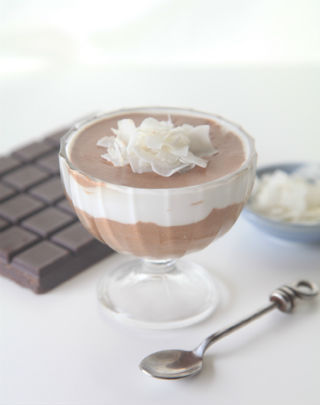 Irish moss is a type of seaweed that grows along the Atlantic coasts of Europe and North America. Like most sea vegetables, Irish moss is high in iodine, magnesium, calcium, manganese, zinc, bromine, and other minerals. It’ s also a source of carrageenan, the jelly-like thickening agent used to thicken a variety of food products.
Irish moss is a type of seaweed that grows along the Atlantic coasts of Europe and North America. Like most sea vegetables, Irish moss is high in iodine, magnesium, calcium, manganese, zinc, bromine, and other minerals. It’ s also a source of carrageenan, the jelly-like thickening agent used to thicken a variety of food products.
Irish moss isn’t something to eat every day, but transforming seaweed into gel is a fun little experiment. Plus, there’s a burning question about Irish moss that needs to be answered. Can pudding made from seaweed actually taste good? Not just tolerably good, but really good?
When a package of Irish moss is opened and a strong aroma of ocean wafts out, it’s hard to believe that throwing seaweed in a blender with chocolate is a good idea. But once it turns into gel, Irish moss has only a slightly detectable flavor that’s completely masked by chocolate, espresso and coconut. The espresso powder in this version of Irish moss pudding is an especially nice addition, giving the pudding a more complex dark chocolate flavor.
The allure of Irish moss for many is that it gives desserts a creamy texture without adding any dairy. This pudding is creamy, no doubt, though not quite as rich and velvety as pudding made from whole milk. But the Irish moss gel also means that cornstarch and loads of sugar can be skipped too, which makes this pudding even more appealing.
Servings: 2
Time in the Kitchen: 15 minutes, plus 4 to 12 hours to soak the Irish moss
Irish Moss Gel
Before making the pudding, the Irish moss must first be turned into gel.
The thickening power of Irish moss varies from batch to batch, so exact measurements aren’t always going to yield the exact same results. Think of the measurements below as estimates. As a general rule, a handful of the moss plus just enough water to cover it in the blender is about right. The texture of the gel can be fairly loose; don’t necessarily expect a texture as firm as Jello. For this reason, pudding is the easiest dessert to make with Irish moss because it’s very forgiving and doesn’t require a firm, sliceable texture.
Ingredients:
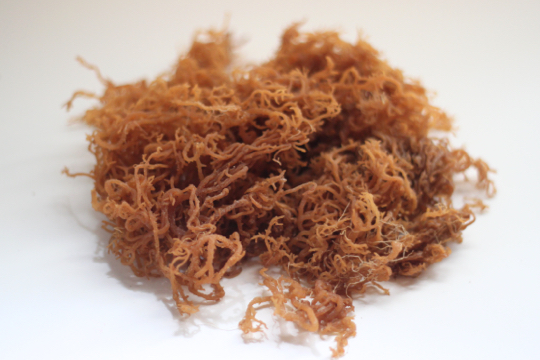
A small handful (about 1/2 cup/2 ounces/56 g) whole leaf Irish Moss
¾ cup cold water (180 ml)
Instructions:
Rinse the Irish moss thoroughly in several rinses of water. There will be a good amount of sand and debris to wash away.
Cover the rinsed Irish moss with cold water and soak 4 to 12 hours. Most packages of Irish moss will have a recommended soaking time.
Drain the water from the moss. The moss will have at least doubled in volume. Chop the moss up with a knife or kitchen shears. Measure out about 1 cup/4 ounces/113 g of the soaked, chopped moss and put it in a high-powered blender (like a Vitamix).
Add the 3/4 cup cold water and blend on medium speed for 3 to 5 minutes until the moss and water have turned into a very smooth gel.
Keep the gel in the refrigerator if not using immediately. It will stay fresh about a week.
Irish Moss Chocolate Espresso Pudding
Ingredients:
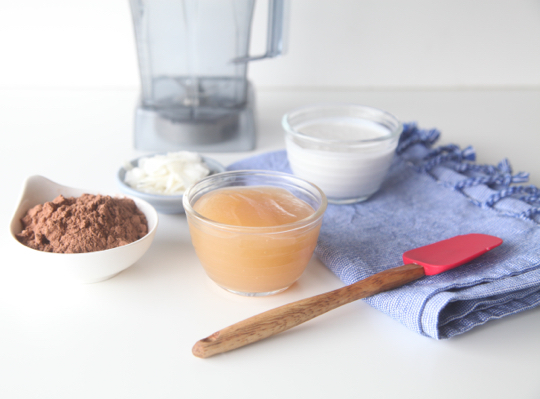
1/2 cup Irish moss gel (120 ml)
1 tablespoon maple syrup (15 ml)
½ teaspoon vanilla extract (2.5 ml)
2 teaspoons instant espresso powder (10 ml)
2 tablespoons unsweetened cocoa powder (15 g)
1 cup coconut milk (240 ml)
2 tablespoons warmed coconut oil (30 ml)
*The amounts of maple syrup and cocoa powder can be increased if you like, for a sweeter and more chocolatey pudding.
Instructions:
In a blender, combine the Irish moss gel, maple syrup, vanilla extract, espresso powder, cocoa powder, coconut milk and coconut oil. Blend for 1 to 2 minutes, until very smooth. Chill before serving.
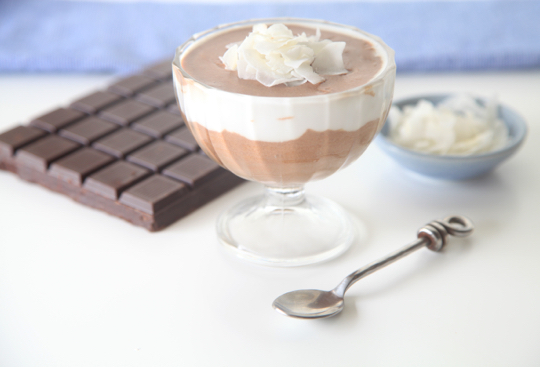
Not Sure What to Eat? Get the Primal Blueprint Meal Plan for Shopping Lists and Recipes Delivered Directly to Your Inbox Each Week



June 19, 2015
From 500 Pounds to a 500 Pound Deadlift
It’s Friday, everyone! And that means another Primal Blueprint Real Life Story from a Mark’s Daily Apple reader. If you have your own success story and would like to share it with me and the Mark’s Daily Apple community please contact me here. I’ll continue to publish these each Friday as long as they keep coming in. Thank you for reading!
 My name is Mike, I am 31 years old and I have lost over 100 lbs…twice.
My name is Mike, I am 31 years old and I have lost over 100 lbs…twice.
Growing up I was always a big kid, but by the time I was going into my senior year of high school, I found myself at 300 lbs. My dad had been giving me a hard time about it for quite some time, a bit of the pot calling the kettle black, but he was right. As a lifelong baseball player, I was in danger of getting cut from the high school team due to my weight, despite having been on a club team since the age of twelve and having played all over the country, in Mexico, and in the AAU junior Olympics as a sixteen year old.
My dad convinced me that I should join the high school wrestling team as a way to lose weight. They were eager to have me even though I was twenty five pounds too heavy for the heaviest weight class since heavy weights, the 215 lb and 275 lb weight classes, were hard to come by. This was the most physically demanding thing I had ever done, especially combined with the heavy dieting required to make weight. The diet was your standard calorie restriction; everything is fine in moderation fare. I spent a year and a half absolutely miserable, hungry, tired, and sore all the time, but at the end of it I was weighing about 185, able to do chin-ups for the first time ever, and headed to college in 2002 a new person. It was at this point that I made a fatal mistake; I figured that I had fixed my problem and that now I could rejoin society and eat like a “normal” person.
College is an interesting place when it comes to food, there is tons of it and it is all basically free. I knew I did not want to overdo things, I had heard about the freshman forty. So I figured I would avoid the all you can eat dinner and just go to sleep early to avoid dealing with the hunger. Hunger at this point was a big issue for me since after losing the original weight I was literally hungry all the time. It was just a matter of degree. After meals it went to a manageable level and if I went too long without eating I would get dizzy and very irritable. I was going to the gym regularly and running several times a week in sweats just like I had learned to do in wrestling.
For a while things were going well, I did not know anybody and this type of self imposed isolation fit well with my introverted nature. However, slowly I met people, made friends, and got a girlfriend (my future wife). This did not mesh well with spending every free second either exercising, running, or sleeping, and eventually I started running less and eating dinner for social reasons. I put on a little weight, but in general I was happier and healthier. It was at about this point that I was involved in an auto accident, and for the better part of six months was in almost constant back pain. I stopped running and going to the gym altogether, and by the time my back was feeling better I had gotten used to spending all that time with my girlfriend and other friends. This began a slow climb in weight over the next six or seven years.
My job during and after college involved long hours in the car and almost no sleep on weekends. I ate a lot of fast food; coffee will only keep you awake in the car up to a certain point and eventually I figured out that I could use food to stay awake as well.
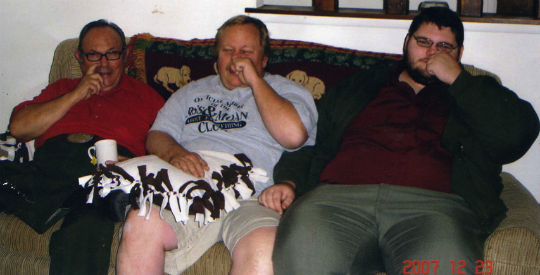
By 2009 I was an absolute wreck, I weighed right around 500 lbs, simple things like tying my shoes or getting in and out of my car were serious physical activities that required several minutes to catch my breath. A normal solid BM was a very rare thing, the first 20 minutes after waking every morning involved excruciating heel and arch pain in both feet, and I had GERD like symptoms on a daily basis. I walked extremely slowly and would trip, stumble, and fall frequently. However, the worst thing by far was the depression. I was an absolutely miserable person to be around, constantly moody, sad and despondent. I quite frankly don’t know how I did not end up killing myself and can only think that it had to have been the support of my fiancé, otherwise I would have.
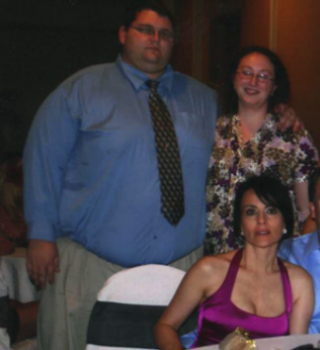 It was around this time that I started to realize what I had done to myself and started trying to make changes for the better. Sadly, I could not even weigh myself since our scale’s limit was 400 lbs. At one point a friend and I figured out that by placing two scales together with a cutting board on top of them, then trying to hold still long enough to get both numbers and adding them together gave a fairly accurate weight. I started trying to use portion control and exercise to lose weight, but both were difficult and involved a lot of starting and stopping. For example, when I first tried bench pressing I found that I could not get back up off the bench without help. I used what I knew, which was bodybuilding style exercise and the standard low fat “healthy” whole grains diet. It was slow going but I did see some progress and I started scouring the internet for advice. I stumbled onto t-nation.com and used that to make my exercise infinitely more effective. I also came across quite a bit of diet advice and when searching for more information about those diets I was constantly coming across Mark’s Daily Apple. In May 2011, shortly after getting married (weighing 414 lbs), I got a copy of The Primal Blueprint.
It was around this time that I started to realize what I had done to myself and started trying to make changes for the better. Sadly, I could not even weigh myself since our scale’s limit was 400 lbs. At one point a friend and I figured out that by placing two scales together with a cutting board on top of them, then trying to hold still long enough to get both numbers and adding them together gave a fairly accurate weight. I started trying to use portion control and exercise to lose weight, but both were difficult and involved a lot of starting and stopping. For example, when I first tried bench pressing I found that I could not get back up off the bench without help. I used what I knew, which was bodybuilding style exercise and the standard low fat “healthy” whole grains diet. It was slow going but I did see some progress and I started scouring the internet for advice. I stumbled onto t-nation.com and used that to make my exercise infinitely more effective. I also came across quite a bit of diet advice and when searching for more information about those diets I was constantly coming across Mark’s Daily Apple. In May 2011, shortly after getting married (weighing 414 lbs), I got a copy of The Primal Blueprint.

The Primal Blueprint was a watershed moment for me; it just made so much sense. My wife and I adopted a Primal Blueprint diet almost immediately and I got myself my first pair of five fingers. Life without bread was difficult at first, but that faded quickly. This also seemed to clear up the BM and GERD problems within about three months. I started to feel a lot better pretty quickly, my lifts and weight loss both starting improving much more rapidly.
 It is now 2015, I have dropped over 20 inches off my waist, lost four shirt sizes (6XL to 2XL) and am weighing in at 270 lbs, and I can do chin ups again! Most importantly, all of my previous ailments are gone and I am able to run and play with my daughter, born May, 2012.
It is now 2015, I have dropped over 20 inches off my waist, lost four shirt sizes (6XL to 2XL) and am weighing in at 270 lbs, and I can do chin ups again! Most importantly, all of my previous ailments are gone and I am able to run and play with my daughter, born May, 2012.
The biggest change was a rediscovery of satiety, I found that eating Primally allowed me to eat reasonably and feel full. Additionally, I found I could miss meals and not even notice it, which was unheard of for me. I think this is the most important difference when comparing Primal to SAD, and it is the thing that I try to share with anyone who will listen. Having lost 100 lbs two different ways, I can tell you that doing it without constant unbearable hunger makes the process a lot more manageable.
When I drug myself out of the denial I had been living in and came to terms with what a horrible mistake I had made, I was dreading the fact that I was going to have to lose significant weight all over again. I knew from past experience how little I got to eat to lose weight and how hungry I was the last time I did it. When I compare that to how much I eat currently and how hungry I got even cutting back a little I felt very daunted. If I had not found The Primal Blueprint when I did I would certainly be nowhere near where I am now in terms of both my physical and mental health. I still probably have a few pounds to lose, but in August 2014, I reached a big psychological milestone when I finally reached a 500 lb dead lift, my old top body weight, and I owe so much of it to the decision to go Primal two and a half years ago.
Since starting my Primal journey my wife and I now have two children, ages 3 years and 5 months. I look back on what I was and find it hard to imagine that person was me. I keep a couple pictures of myself at my heaviest where I can see them and they can act as inspiration. I look at the person in those pictures and I know there is no way that person would have been able to be the type of father to my children that they need. Thank you so much for helping me make the changes I needed to make to become that father.
Mike




June 18, 2015
Why I Love Coconut Oil (Plus a Free Jar for You!)
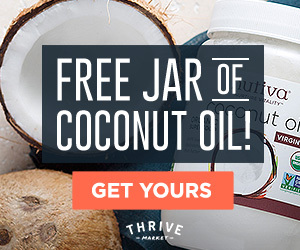 How would you like a free jar of organic coconut oil? Lucky for you, Thrive Market is offering all first-time members a FREE sample box—including a full-size jar of Nutiva organic virgin coconut oil. This sample box—valued at $25—includes some of the online shopping club’s best healthy products. You can claim your free jar and sample box here. (This giveaway expires on June 24. The rest of the details are at the bottom of this post.)
How would you like a free jar of organic coconut oil? Lucky for you, Thrive Market is offering all first-time members a FREE sample box—including a full-size jar of Nutiva organic virgin coconut oil. This sample box—valued at $25—includes some of the online shopping club’s best healthy products. You can claim your free jar and sample box here. (This giveaway expires on June 24. The rest of the details are at the bottom of this post.)
I’m a big fan of coconut oil myself, and I’ve written quite a lot about coconut oil over the years: here, here, here and here. Since you’ll likely have a jar of the stuff in the mail to you shortly, let’s spend some time revisiting what’s so great about this remarkable oil.
Remember the days when coconut oil was maligned for being high in saturated fat and thus a high-risk oil for heart disease? It seems that rumor is finally being put to rest. Sure, coconut oil is high in saturated fat, but it’s not the traditional saturated fat made up of long chain fatty acids. The structure of fat in coconut oil is unique—65% of its makeup are specialized fats called medium chain triglycerides (MCTs) that, when broken down in the liver, contribute to efficient energy (and fat) burning. It’s more difficult for our bodies to convert MCTs into stored fat.
Lauric acid is a specific type of MCT in coconut oil that has been shown to increase high-density lipoprotein (HDL) cholesterol in the blood. HDL is the beneficial type of cholesterol that mops up excess cholesterol in your blood and transports it to the liver for processing. The higher your HDL, the lower your low-density lipoprotein (LDL) …you know, the kind of cholesterol that is implicated in heart disease. Lauric acid lowers cholesterol by encouraging its conversion to a hormone called pregnenolone, which is a precursor hormone to many other hormones in our bodies and is thought to regulate hormone levels according to your body’s needs.
It gets better. A 2009 randomized clinical trial made up of 40 women showed that coconut oil not only boosted HDL levels in the blood, but also decreased abdominal fat. The women consumed either 2 tablespoons of coconut oil or 2 tablespoons of soybean oil once a week for 12 weeks. The soybean oil group had increased LDL cholesterol and decreased HDL cholesterol (major heart disease factors), while the coconut oil group enjoyed increased HDL levels (a heart healthy measure). As for weight gain, the women on the coconut oil diet had none, and even lowered abdominal fat—the kind of fat that is ridiculously hard to lose and contributes to heart disease.
Coconut oil has been show to defend against viruses, bacteria, fungus, and candida. And there’s some evidence to suggest that it can help improve the body’s response to insulin and assist in regulating our blood sugar levels.
There appears to be no end to what you can do with coconut oil. Because it is heat stable, it’s a great oil for cooking. In the kitchen, I like to use it…
In a stir fry or quick sauté
To make Frozen Coconut Macadamia Bars
As a butter substitute in baking
To make my very own raw chocolate bars
In a supercharged smoothie
To make a primal fat mash-up I always like to have around
And outside of the kitchen, it can be used:
As a moisturizer
As a leave-in conditioner
As lip balm
To soothe itchy skin or bug bites
As a natural treatment for lice
To relieve the pain of a sore throat
In a DIY body butter
As a makeup remover
But careful—not all coconut oil is what it’s cracked up to be. Partially hydrogenated coconut oil has just as harmful an effect on your health as those nasty processed oils full of trans fats. And refined coconut oil is made from chemically bleached and deodorized coconut meat. No thank you.
You want the good stuff—organic virgin coconut oil. And that’s exactly what Thrive Market is giving away this week. So get your free jar here while supplies last and before time runs out.
If you’ve registered with Thrive Market in the past but never made a purchase, you’re also still eligible to redeem this gift. If you’ve registered and have already placed an order in the past, you won’t receive the coconut oil gift, but don’t let that stop you from sautéing with some coconut oil today!
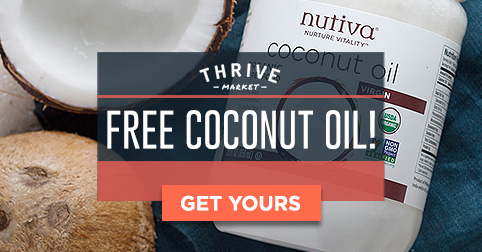



Mark Sisson's Blog
- Mark Sisson's profile
- 199 followers



